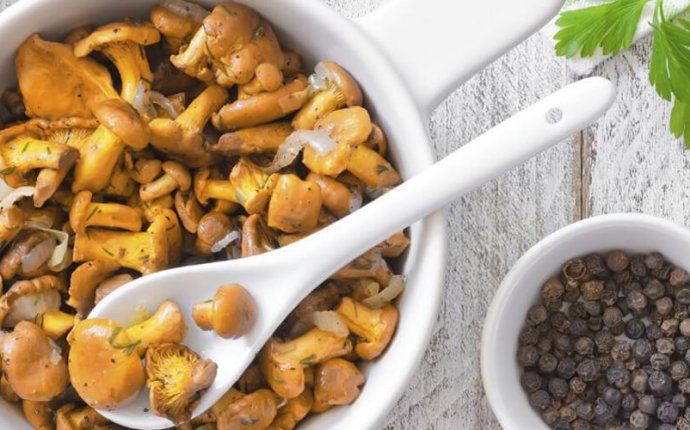
PCOS Ayurveda Treatment
 Polycystic Ovarian Syndrome (PCOS) is a very common female health complaint, affecting approximately 5- 12% of women.It is important to know the ayurvedic remedies for PCOS as it causes worry as it is commonly found in reproductive age; also it is thought to be one of the leading cause of female infertility. PCOS is associated with irregular (often excessive) menstrual bleeding, abnormal menstrual periods and cycle and lack of ovum production (anovulation).
Polycystic Ovarian Syndrome (PCOS) is a very common female health complaint, affecting approximately 5- 12% of women.It is important to know the ayurvedic remedies for PCOS as it causes worry as it is commonly found in reproductive age; also it is thought to be one of the leading cause of female infertility. PCOS is associated with irregular (often excessive) menstrual bleeding, abnormal menstrual periods and cycle and lack of ovum production (anovulation).
Curejoy Expert Janardhana Hebbar Explains:
PCOS: Ayurvedic Perspective
Polycystic Ovarian Syndrome (PCOS) is a very common female health complaint, affecting approximately 5- 12% of women.It is important to know the ayurvedic remedies for PCOS as it causes worry as it is commonly found in reproductive age; also it is thought to be one of the leading cause of female infertility. PCOS is associated with irregular (often excessive) menstrual bleeding, abnormal menstrual periods and cycle and lack of ovum production (anovulation). Women with PCOS may also experience androgenic features such as hirsutism, acne and alopecia.
PCOS, obesity, insulin resistance are known to be correlated, with androgens as a linking factor. In PCOS, there is increased production of androgens (a group of “male” hormones that includes testosterone) by the ovaries, which suppresses the maturation of ovarian follicles. Consequently, ovum does not get properly formed and released (anovulation). Remember that the ovum meets with the sperm during intercourse, leading to conception. Therefore, in case of PCOS, there might be problems with conception.
In Ayurveda, PCOS is not explained as a single disease entity; it can be considered under the heading of Yoni Vyapat (utero vaginal disorders). Also, Pushpaghni Rewati, mentioned by Acharya Kashyapa bears some similarity with the symptoms of PCOS.
The symptoms commonly found in these conditions can be summarized as follows:
- Menstrual irregularities have been described under artava vyapads or Yonirogas (uterine disorders).
- Anovulation is included under Vandhya (infertility).
- Obesity is described as Sthoulya.
- Acne and Baldness have been described as Mukhadooshika and Khalitya, two independent pathogenesis.
- Hyperinsulinemia leads to type 2 Diabetes mellitus, and is described under prameha. It is also manifested as a complication of Sthoulya.
Pathology Or Origin Of Diseased Condition
When deranged vata (body humor representing flow) and excess Kapha (body humor representing mass) vitiates the mamsa (muscles), shonita (blood) and meda (fat), circular, raised and knotted inflammatory swellings called ‘Granthi’ are produced. This type of glandular swelling can be mapped to the modern terminology ‘cyst’ which means an abnormal closed epithelium-lined cavity in the body, containing liquid or semisolid material.
In PCOS, development of follicles has been arrested at one or any level and remained as it is. The cysts are follicles at varying stages of maturation and atresia. So, these cysts are not destined to ovum. Thus, this pathology is compared with Granthibhuta Artava Dushti i.e. the follicles become and remain as cysts instead of developing into mature ovum.
Ayurvedic Treatment for PCOS
Treatment modalities mainly aim at regularizing the Tridoshas (Vata, Kapha and Pitta) and reducing or eliminating build-up of mala (residue) and ama (toxins).
- Excess Kapha typically indicates deficiency in digestive and metabolic fires. These are kindled using medicines and activities.
- Incomplete digestion and metabolism leads to build up of residue and toxins that further hamper digestion and metabolism. Specific purification treatments, such as koshta shuddhi (purification of the alimentary canal), are provided to remove the accumulated residue and toxins.
- Problems in flow and circulation (Vata dosha) can also lead to incomplete digestion and metabolism. Build up of excess Kapha, Mala and Ama further obstructs Vata leading to a vicious cycle. Medications and activities that help regularize Vata, especially Apana Vata (responsible for downward flow of food and nutrients through the alimentary canal), are provided.
Herbs
- Ashoka (saraca asoca): hormonal balance
- Varuna (Crataeva nurvala): helps clear the channels and reduce size of cysts
- Hareetaki (Terminalia chebula): reduces body morbidity due to laxative effect
- Pippali (Long pepper – Piper Longum): potent rejuvenating, carminative, free radical scavenging agent
- Bilva (Aegle marmelos): reduces size of cyst due to potent digestive effect
- Agnimantha (Premna integrifolia): reduces size of cyst due to potent digestive effect
- Guduchi (Tinospora indica): rejuvenative effect
- Punarnava (Boerrhavia diffusa): diuretic and smoothening effect
- Chitraka (Plumbago zeylanica): potent digestive and carminative
- Shunthi (Ginger): quick penetrative and digestive
- Anjani (Memycylon indicu): proven efficacy in reducing cysts
Ayurvedic Medicines (Processed and calibrated combination of active ingredients)
- Dashamoola (a group of ten herbal roots)
- Chitrakadi vati
- Varunadi kwatha
- Panchakola choorna
- Arogyavardhini vati
- Triphala guggulu
- Varunadi louha
- Phalatrikadi kashaya
- Punarnavadi kashaya
- Navayasa louha
- Navakarshika guggulu
- Sukumara kashaya
Given the link between obesity, insulin resistance, stress and PCOS, in addition to specific treatments, timely intake of balanced diet, regular physical exercises and healthy lifestyle also play a key role in keeping PCOS under check.














